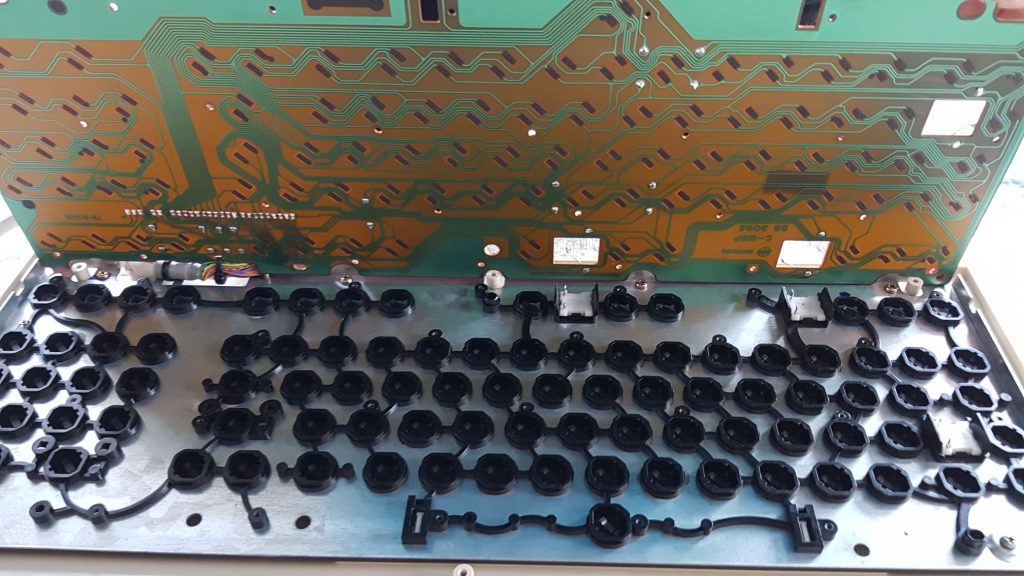I just finished a repair of my Commodore C128D keyboard. Both the left shift and the space key did not work anymore. After opening up the two keyboard shells I watched a nice repair video of Jan Beta on YouTube just to find out that you can leave the keyboard in its upper shell screwed in 🙂
There are two reasons for me to document my effort despite Jan´s video: After opening the keyboard I found a small spring on the floor that Jan did not mention. But more importantly, I used a different method to repair my keys.

So above is the keyboard, which I freed from both shells. As a next step I reattached the upper shell. Then I removed the shift and space keycaps using a special key puller. I do not recommend that you use a screwdriver or similar to lift off the keys! The up and down movement of each key is supported by at least on spring per keycap. Do not lose these springs when you pull off the keycap.
Before you can remove the PCB you have to desolder the leads to the three special locking keys, which are the shift-lock key, the caps-lock key, and the 40/80 display key. This is rather easy to do as you can see in Jan´s video. The PCB is attached to the metal plate using a ton of tiny screws, which have to be removed now.
The printed circuit board (PCB) needed some careful cleaning with iso alcohol which I did using a soft cloth:

Regarding the little spring I found on the floor: Be careful not to lose it when you separate the PCB from the metal plate with the plunger sockets. It took me a bit to find out that the spring connects electrical grounding from the PCB with the metal plate:

The round black thingies on this picture are the sockets that hold the plungers in place. The plungers for the extra C128 keys are bluish, the plungers for the C64 keys are black. Each plunger has a silicon band with a little rubber (?) bridge attached. If you press a key, the plunger moves down towards the PCB and the bridge closes an electrical circuit. Now the 6526 I/O chip knows that a key has been pressed. Because we removed the keycaps we can pull the plungers in question right out.
In my case the bridge had a thin coating of graphite that had worn off. Following is a picture of a black plunger from below including the silicon band and the black bridge.

As I had no replacement plungers like Jan, I used a 7B pencil and applied a new coating of graphite on the bridge. I went back and forth a good 40 times. I read that a 9B pencil is even better, but for me the 7B that I had worked as well. The grayish surface you see on above picture is the graphite from the pencil.
After reassembling everything the keyboard worked just fine! If my solution does not withstand the test of time, I will try another solution and update my article of course.
Some people on the Internet said that the bridge can also be coated with conductive ink. This is the next solution I would try in case the applied graphite does wear off too fast. Unfortunately, conductive ink is a bit pricey for just one or two keys.
In case you find a replacement plunger on the Internet, make sure that it has the correct length for the C128. The stem of my plungers is about 7.5 mm long and not slotted, which is not what the C64 uses.